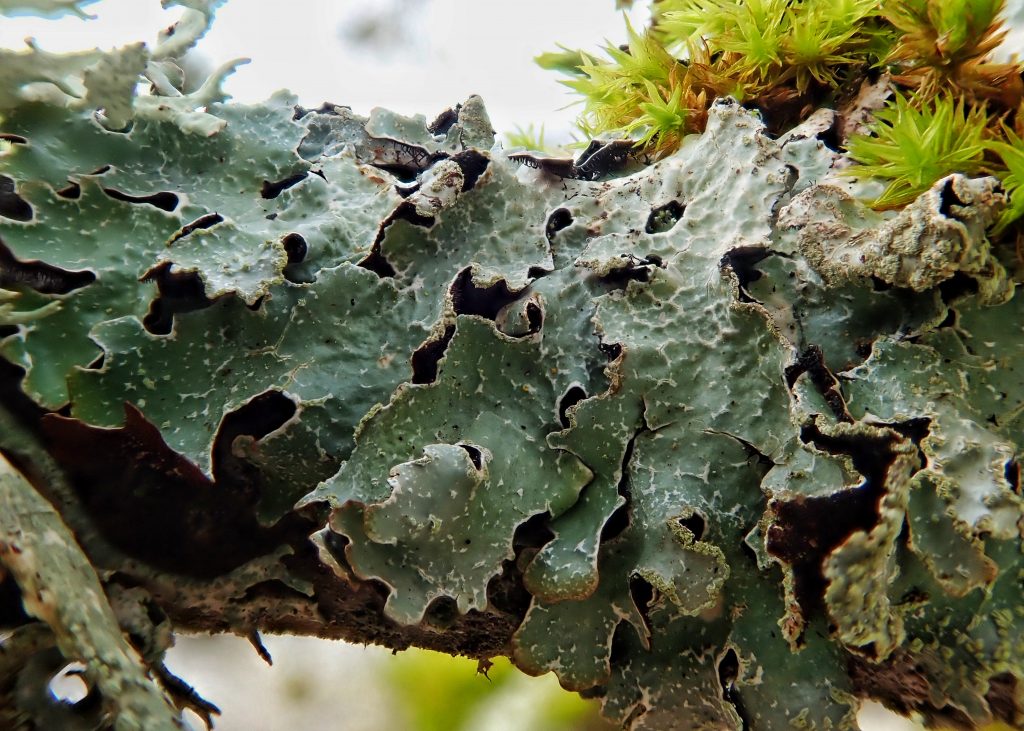
Parmelia sulcata is everywhere! You can find it from sea level thickets to high in the mountains, on high desert sagebrush and seasonally flooded Oregon ash. It may reach its densest concentrations in urban environments, because in thrives in areas with high atmospheric nitrogen, and is tolerant of many other forms of pollution.
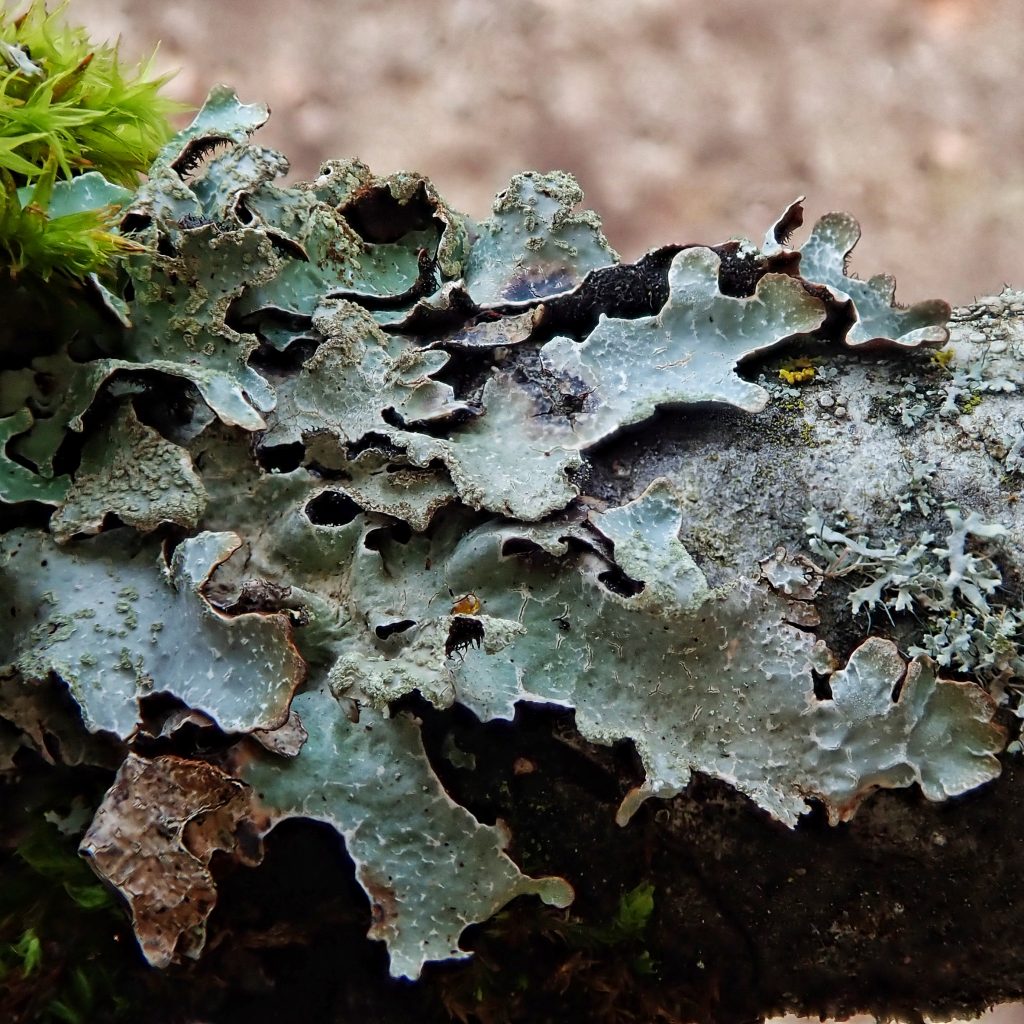
Back in my callow youth I assumed these Parmelia lichens were either shredded or deformed bark. They are not starkly ‘other’ from the tree the way that Evernia and Ramalina are, and require a closer look to perceive independence. Parmelia as a genus are relatively easy to identify, because of the grayish dorsal and black ventral surfaces. But a hand lens, or possibly just very good ability to close focus ones eyes, is required to spot the shapes of the rhizines which are diagnostic to each species. To further complicate things there are chemotypes of P. sulcata, which some feel are separate species. More on that here.
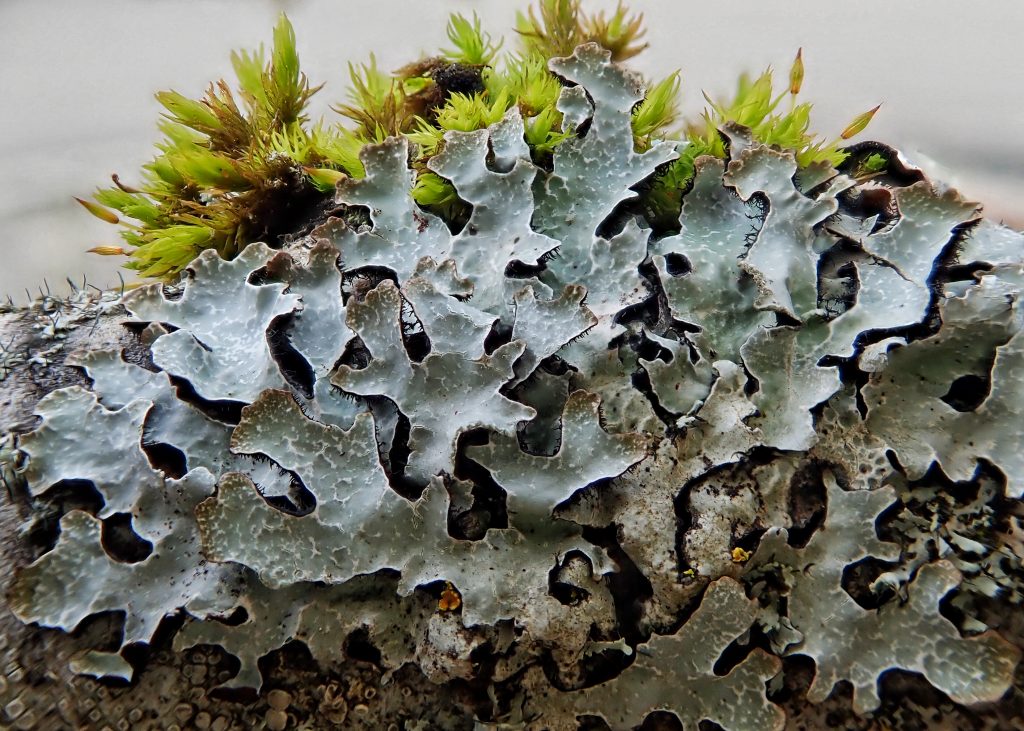
Description– Loosely appressed, foliose thallus, light grey to greyish green; lobes 1-4mm, with lighter angular lines; soredia on margins and along angular cracks; lacking isidia and apothecia rare; rhizines squarrose (branching at right angles) in the field, though mostly simple at the edges.
Similar species– Nothing else has the combination of angular cracks with powdery soredia, and squarrose rhizines.
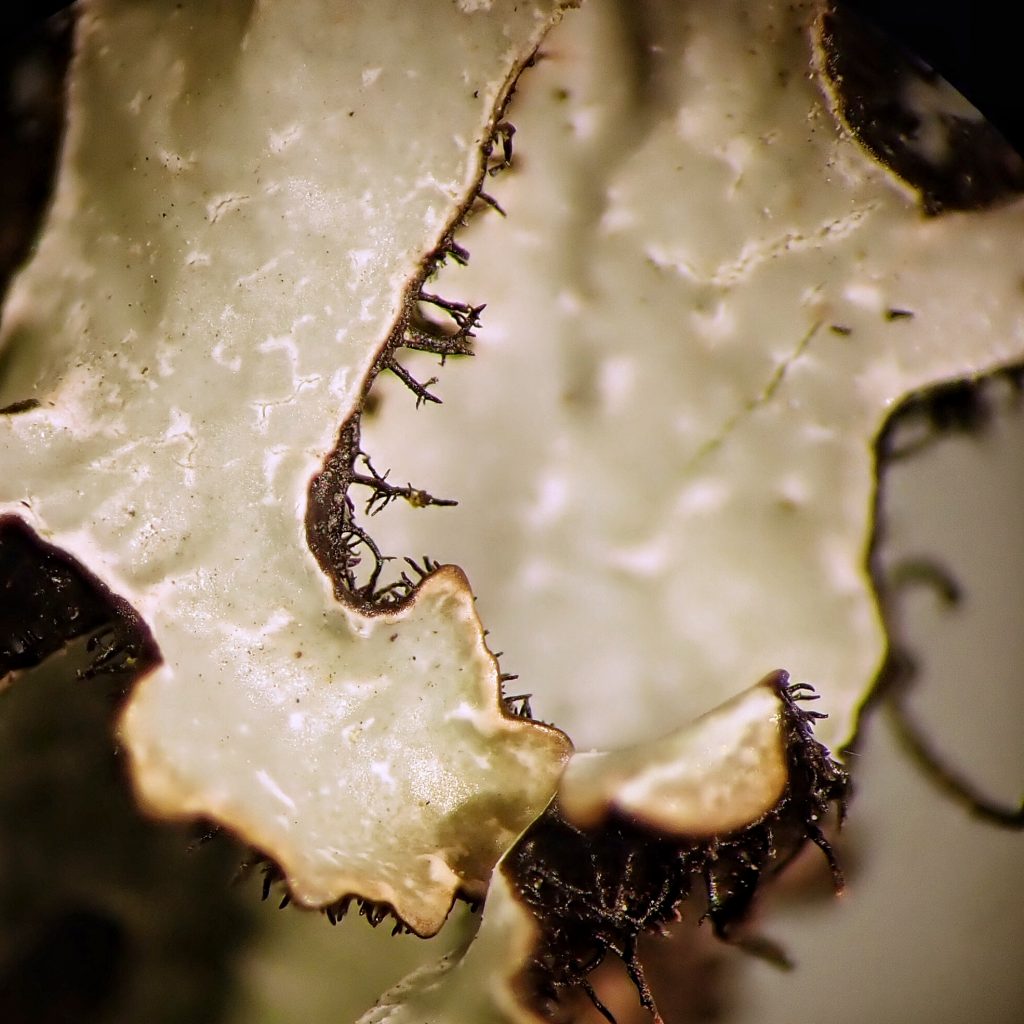
Habitat-Usually found on bark or wood; occasionally on rock or mossy rock.
Range-Cosmopolitan; found throughout our region.
Eaten by– Hummingbirds like to use this lichen to line their nests; Many cultures have made a brownish yellow dye from its extracts.
Etymology of names–Parmelia is Greek for ‘small shield’, alluding to the tendency of some members of this genus to form roughly circular groups of thalli. The specific epithet sulcata means ‘with furrows’, but I can’t ascertain which furrows this references.

Parmelia sulcata – Common Macrolichens of the Pacific Northwest
https://lichenportal.org/cnalh/taxa/index.php?taxon=54529&clid=1093
http://www.lichens.lastdragon.org/Parmelia_sulcata.html
https://en.m.wikipedia.org/wiki/Parmelia_sulcata
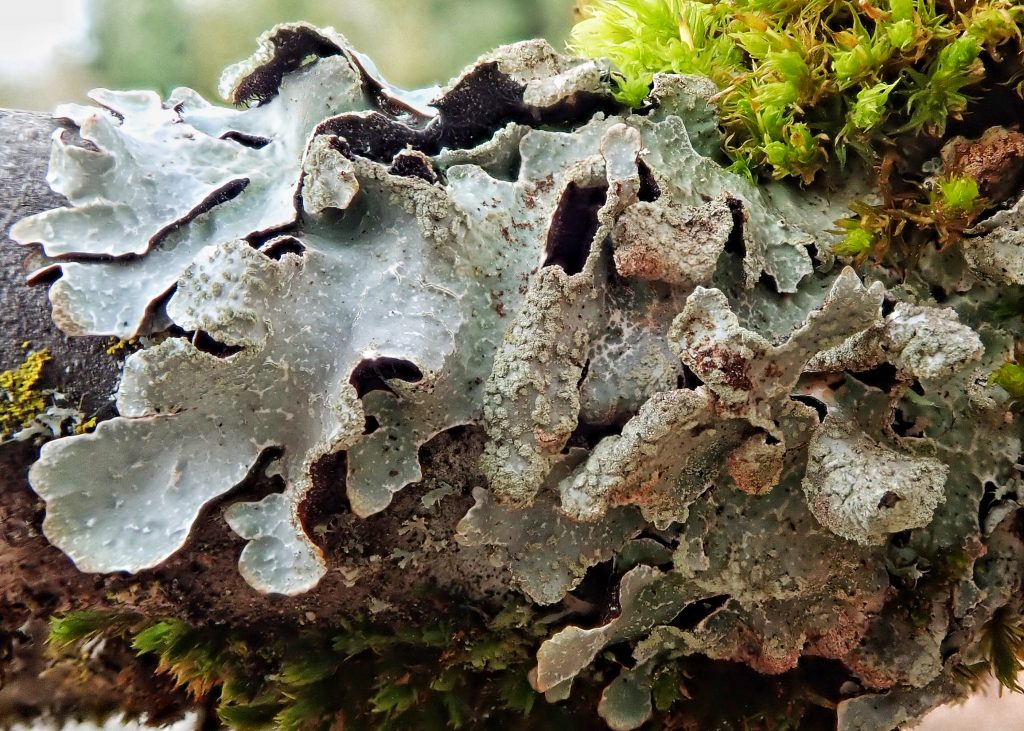
Great write up on a good species. Thank you!!!
I’ll never learn the fancy terms… How hard would it be to set up your word processor to automatically (or optionally) insert a link (ooh, or a popup… I’m just dreaming… thanks:):) ) to the definition every time you type the word??
I love your high definition photos, they are eye candy!! I’ve been out to Frenchman’s Bar & Vancouver lake this week. The mosses & lichen are thrilling:)
I used to link technical terms to definitions but I got lazy, and I figured people who cared had clicked on them. I’ll try to remember to do so again.
Dear Dan,
I just stumbled into your world this morning and I’m very happy here! Was researching a moth I mistook for a bird dropping: Mesoleuca gratulata. Quite lovely, once I saw it was a moth.
Also lovely: lichens! I am a lichen fanatic. I think you will reach your goal of 10K rather quickly via lichens. The PNW abounds in lichens and lichen aficionados. From your writing style and your curious nature, I think you will enjoy this website: https://www.waysofenlichenment.net/ways/home. The promised book hasn’t materialized, as the science keeps changing, but “Reading the Thallus” is tons of fun. I hope you like it.
Thank you, Mo! I am familiar with the ways of enlightenment site, and am friends with Trevor Goward, the guy that runs it. It is a great resource!!!